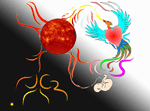Third step
towards the analysis
of dreams.
This reflection on the paths of consciousness has led us down unexpected paths, and it has enlightened us on the reasons that push man to legitimise his actions [see : The voice of influence-in french].
Above all, it has enabled us to take a new step towards our goal: the field of dreams.
Since the beginning, in fact, we have taken several essential steps towards this objective: what are these steps ?
1 - We were first interested in a thousand-year-old myth, suggesting the existence of a universal mode of communication before languages became differentiated [see : The universal language-in french].
Could this myth be the result of a correct intuition ?
Among the various means used by evolved species to communicate, we can mention, apart from language, the images created by our brain, which allow us to grasp situations and emotions. Thanks to this way of communicating with the environment, a human being can interact with the outside world, and two human beings can understand each other and even other animal species [see : Frontal cortex and information transmission-in french].
What can we say then about the images of our dreams? Could they be understood as a language ? [see : Language of dreams-in french]
This is the reason why we are interested in the different methods of interpreting them [see : The dream throughout the ages-in french].
We have seen that the interpretation depends on the culture, the knowledge in progress, and the person who interprets.
Is there a method that is satisfactory ?
2 - A second step consisted in exploring the functioning of the brain [see : Hypotheses-in french].
If we follow the changes in human nocturnal brain activity, we first observe, with sleep, the cessation of control exercised by the prefrontal cortex. Then, progressively, the subject's internal temperature tends to slip towards the ambient temperature, as is the case in reptiles whose behaviour is essentially instinctive [cf : sommeil lent et sommeil paradoxal-in french], It is at this point that REM sleep occurs and dreams appear.
This phenomenon allowed us to consider the following possibility: REM sleep would correspond to the cerebral activity of animals that do not regulate their internal temperature and are essentially solitary unlike mammals.
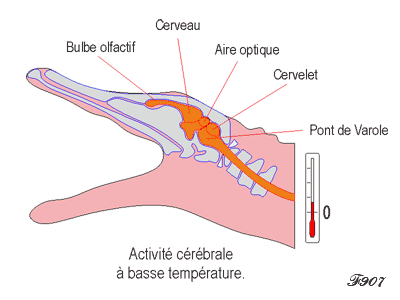
We have also discovered that the origin of the dream is located in the brain stem [see : Development of the nervous system-in french], in connection with the hypothalamus [see : The trigger of REM sleep-in french] one of the oldest regions of our brain, whose functioning escapes our consciousness.
But since individual instinct cannot be expressed freely in a collective setting without risking anarchy, a new brain region has emerged: the prefrontal cortex, which is capable of inhibiting instinctive responses that could jeopardise the cohesion of the group [see : Social awareness-in french].
Until now, the brain developed to improve exploration of the environment and adaptations to life. From now on, the prefrontal cortex will focus on developing a function that is often the opposite, inhibiting a certain number of vital responses in order to take advantage of the group, or to allow itself to be enslaved by it [see : The voice of influence-in french].
We now know that the brain areas active during dreams and during the day are the same. The images that emerge to our consciousness during temporary awakenings appear when the prefrontal cortex regains its capacity to process information.
We can deduce from this that the functioning of the dream, originating from our "unconscious brain", can only be expressed if the inhibiting control of the frontal cortex ceases.
Finally, by discovering how the unconscious expresses itself, we have noted that there are, in each of us, two beings: one at the service of reason, the presumed seat of consciousness, the other at the service of instinct, which has become unconscious and, very often, very badly judged.
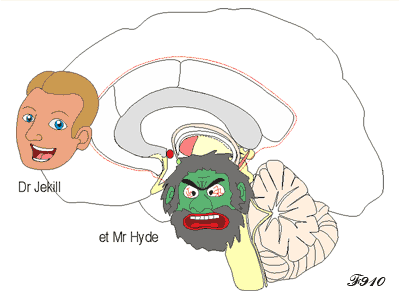
3 - It therefore became essential to understand what consciousness consists of, and we asked ourselves in what way this function that we use daily differs from the one that prevails during the night and offers us these other life experiences that disappear when we wake up.
Is our daytime consciousness incomplete ? Or do we not know how to use it ?
We then sought to discover how the edifice of consciousness has been built over the millennia. We realised that we did not always know how to use all the possibilities of our unconscious, which responds above all to what it feels in relation to reality [see : Thought-in french].
In this chapter on consciousness, we have seen how human thought has evolved, and how rational thought can become dissociated from reality. It is not that man is not aware of his mistakes, but more often than not, he prefers to take into account only his own desires.
How then does his instinct manage to impose its law?
It seems that man has so well succeeded in mastering it that it expresses itself through violence.
The study of the construction of consciousness during the evolution of species has enabled us to understand how it was built [see : The construction of consciousness-in french], and how it may have been altered in humans [see : The suppression of dialogue-in french].
However, most of the peoples who possess the sensitivity closest to nature have preserved this form of consciousness adapted to reality. Children also possess it. It seems then that only modern man, dominated by his abstract thinking, no longer has access to it. How could he remember and understand his dreams ?
To answer this question, it was essential to explore the functioning of the 'unconscious', that part of our being that escapes us, and what differentiates it from our consciousness [see : The unconscious, that unknown-in french].
We have seen that the functioning of our unconscious is above all characterised by 'non-judgement' [see : The unconscious does not judge-in french].
Observing the content of dreams in the way the unconscious works is the first element that can allow us to understand them..
It should be noted that the work we have just done on consciousness has gone far beyond what was expected, which has enabled us to discover how objective consciousness is constructed [see : The building of consciousness-in french]. To be able to interpret dreams, it is essential to exploit all the components of consciousness: in addition to hearing and seeing, comparing and verifying, it is also necessary to develop one's ability to feel, because the dream is determined by our ability to feel, which is too often lost.
Speech, which appeared long after our five senses, will have to be in tune with them.
However, this objective analysis does not concern lucid dreaming [in french], which is nevertheless essential for scientific exploration.
Indeed, if lucid dreaming allows the researcher to keep in touch with the dreamer, and to determine which cerebral areas are activated during the dream, it puts the unconscious back under the control of the prefrontal cortex.
However, to control one's dreams is to prevent the unconscious from expressing itself. How, then, can we discover their true meaning if they have been modified ?
We must therefore understand that the language of the unconscious is a concrete mode of expression, determined by the succession of images. Have we not discovered its prowess, as it shows itself capable of doing everything, exploring the environment, understanding it and even elaborating the answers that our consciousness will only have to collect [see : The unconscious generates its own thoughts-in french] ?
For a long time, the unconscious was considered as a "dumping ground" [see : Origins-in french], which would even possess evil predispositions [see : Islam-in french], [see : Middle Ages-Christianity-in french]. We now know that conscious and unconscious, these two essential functions of our brain, are complementary.
In fact, what makes access to our unconscious so difficult is that it is based more on situations than on ideas or habits [see : Unconscious and objectivity-in french].
4 - This is why our journey will have to continue.
Indeed, the intelligence acquired by adult man no longer allows him to understand this archaic language that is expressed in the images of the dream.
Scientific research has taught us that intelligence cannot progress from higher capacities. This is how artificial intelligence was able to take off from the simplest functioning : that of the child capable of learning by himself [in french] ! However, it is the adults, with their mature intelligence, who try to understand dreams. In addition to this, there are cultural factors, [see : The impasse-in french] hence the extremely variable interpretations.
What about the child, how does he explore and understand the world? Do they possess capacities lost by the adult ?
Could exploiting their capacities for discovery and analysis provide us with answers ?
However, we note that the child, while possessing these capacities, cannot exploit them in the field of dreams because he or she lacks the experience and maturity of the adult, and the knowledge that only life will bring.
In the field of dream interpretation, the child and the adult are therefore incomplete: one has the abilities, the other the lived experience. If the child needs time to mature, the adult may be able to regain the open-mindedness he or she originally had and allowed to fade away.
Thus, in order to understand dreams, we are going to look at the development of the child, its capacities, and its way of thinking... The child indeed has the capacity to easily access the world of images.
By understanding the child, perhaps we can access the imagery of the dream ?
4th stage of dream interpretation :
La naissance de l’esprit sain : (in french)
The birth of the healthy mind : (soon)
Above all, it has enabled us to take a new step towards our goal: the field of dreams.
Since the beginning, in fact, we have taken several essential steps towards this objective: what are these steps ?
1 - We were first interested in a thousand-year-old myth, suggesting the existence of a universal mode of communication before languages became differentiated [see : The universal language-in french].
Could this myth be the result of a correct intuition ?
Among the various means used by evolved species to communicate, we can mention, apart from language, the images created by our brain, which allow us to grasp situations and emotions. Thanks to this way of communicating with the environment, a human being can interact with the outside world, and two human beings can understand each other and even other animal species [see : Frontal cortex and information transmission-in french].
 |
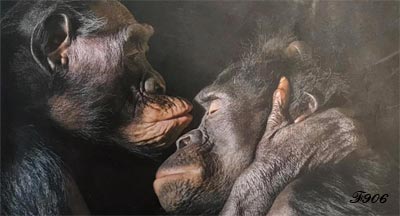 |
Les images permettent de nous situer dans le monde des choses… |
...et dans celui des émotions. |
What can we say then about the images of our dreams? Could they be understood as a language ? [see : Language of dreams-in french]
This is the reason why we are interested in the different methods of interpreting them [see : The dream throughout the ages-in french].
We have seen that the interpretation depends on the culture, the knowledge in progress, and the person who interprets.
Is there a method that is satisfactory ?
2 - A second step consisted in exploring the functioning of the brain [see : Hypotheses-in french].
If we follow the changes in human nocturnal brain activity, we first observe, with sleep, the cessation of control exercised by the prefrontal cortex. Then, progressively, the subject's internal temperature tends to slip towards the ambient temperature, as is the case in reptiles whose behaviour is essentially instinctive [cf : sommeil lent et sommeil paradoxal-in french], It is at this point that REM sleep occurs and dreams appear.
This phenomenon allowed us to consider the following possibility: REM sleep would correspond to the cerebral activity of animals that do not regulate their internal temperature and are essentially solitary unlike mammals.

Ancient brain structures functioned at low temperatures...
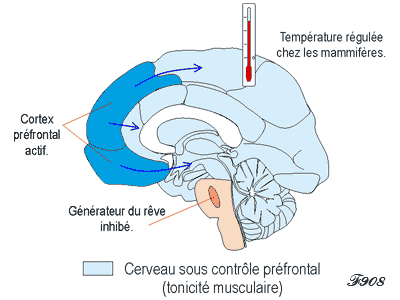 |
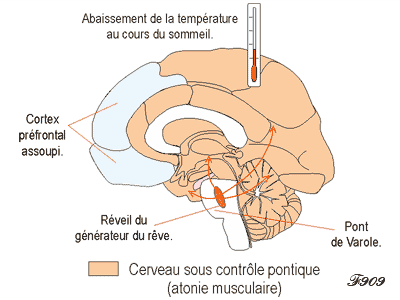 |
Does the lowering of temperature during REM sleep reactivate these structures ?
We have also discovered that the origin of the dream is located in the brain stem [see : Development of the nervous system-in french], in connection with the hypothalamus [see : The trigger of REM sleep-in french] one of the oldest regions of our brain, whose functioning escapes our consciousness.
But since individual instinct cannot be expressed freely in a collective setting without risking anarchy, a new brain region has emerged: the prefrontal cortex, which is capable of inhibiting instinctive responses that could jeopardise the cohesion of the group [see : Social awareness-in french].
Until now, the brain developed to improve exploration of the environment and adaptations to life. From now on, the prefrontal cortex will focus on developing a function that is often the opposite, inhibiting a certain number of vital responses in order to take advantage of the group, or to allow itself to be enslaved by it [see : The voice of influence-in french].
We now know that the brain areas active during dreams and during the day are the same. The images that emerge to our consciousness during temporary awakenings appear when the prefrontal cortex regains its capacity to process information.
We can deduce from this that the functioning of the dream, originating from our "unconscious brain", can only be expressed if the inhibiting control of the frontal cortex ceases.
Finally, by discovering how the unconscious expresses itself, we have noted that there are, in each of us, two beings: one at the service of reason, the presumed seat of consciousness, the other at the service of instinct, which has become unconscious and, very often, very badly judged.

Dr Jekill and Mr Hyde in our brain.
Struggle for influence or complementarity?
Struggle for influence or complementarity?
3 - It therefore became essential to understand what consciousness consists of, and we asked ourselves in what way this function that we use daily differs from the one that prevails during the night and offers us these other life experiences that disappear when we wake up.
Is our daytime consciousness incomplete ? Or do we not know how to use it ?
We then sought to discover how the edifice of consciousness has been built over the millennia. We realised that we did not always know how to use all the possibilities of our unconscious, which responds above all to what it feels in relation to reality [see : Thought-in french].
In this chapter on consciousness, we have seen how human thought has evolved, and how rational thought can become dissociated from reality. It is not that man is not aware of his mistakes, but more often than not, he prefers to take into account only his own desires.
How then does his instinct manage to impose its law?
It seems that man has so well succeeded in mastering it that it expresses itself through violence.
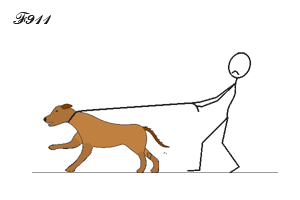 |
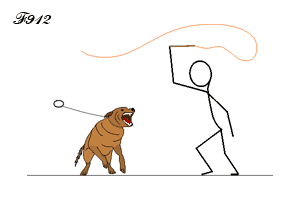 |
Life in society requires the control of one's instinctive tendencies. |
Too much control leads to violence. |
The study of the construction of consciousness during the evolution of species has enabled us to understand how it was built [see : The construction of consciousness-in french], and how it may have been altered in humans [see : The suppression of dialogue-in french].
However, most of the peoples who possess the sensitivity closest to nature have preserved this form of consciousness adapted to reality. Children also possess it. It seems then that only modern man, dominated by his abstract thinking, no longer has access to it. How could he remember and understand his dreams ?
To answer this question, it was essential to explore the functioning of the 'unconscious', that part of our being that escapes us, and what differentiates it from our consciousness [see : The unconscious, that unknown-in french].
We have seen that the functioning of our unconscious is above all characterised by 'non-judgement' [see : The unconscious does not judge-in french].
Observing the content of dreams in the way the unconscious works is the first element that can allow us to understand them..
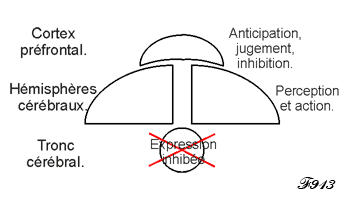 |
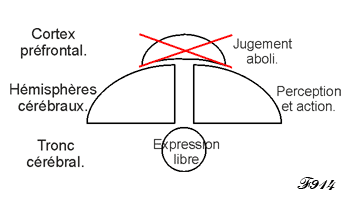 |
Perception at the service of the group : the prefrontal cortex dominates. |
Perception at the service of the individual: instinctive reactions dominate. |
It should be noted that the work we have just done on consciousness has gone far beyond what was expected, which has enabled us to discover how objective consciousness is constructed [see : The building of consciousness-in french]. To be able to interpret dreams, it is essential to exploit all the components of consciousness: in addition to hearing and seeing, comparing and verifying, it is also necessary to develop one's ability to feel, because the dream is determined by our ability to feel, which is too often lost.
Speech, which appeared long after our five senses, will have to be in tune with them.
However, this objective analysis does not concern lucid dreaming [in french], which is nevertheless essential for scientific exploration.
Indeed, if lucid dreaming allows the researcher to keep in touch with the dreamer, and to determine which cerebral areas are activated during the dream, it puts the unconscious back under the control of the prefrontal cortex.
However, to control one's dreams is to prevent the unconscious from expressing itself. How, then, can we discover their true meaning if they have been modified ?
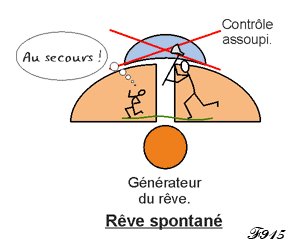 |
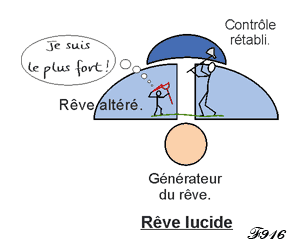 |
For a long time, the unconscious was considered as a "dumping ground" [see : Origins-in french], which would even possess evil predispositions [see : Islam-in french], [see : Middle Ages-Christianity-in french]. We now know that conscious and unconscious, these two essential functions of our brain, are complementary.
In fact, what makes access to our unconscious so difficult is that it is based more on situations than on ideas or habits [see : Unconscious and objectivity-in french].
4 - This is why our journey will have to continue.
Indeed, the intelligence acquired by adult man no longer allows him to understand this archaic language that is expressed in the images of the dream.
Scientific research has taught us that intelligence cannot progress from higher capacities. This is how artificial intelligence was able to take off from the simplest functioning : that of the child capable of learning by himself [in french] ! However, it is the adults, with their mature intelligence, who try to understand dreams. In addition to this, there are cultural factors, [see : The impasse-in french] hence the extremely variable interpretations.
What about the child, how does he explore and understand the world? Do they possess capacities lost by the adult ?
Could exploiting their capacities for discovery and analysis provide us with answers ?
However, we note that the child, while possessing these capacities, cannot exploit them in the field of dreams because he or she lacks the experience and maturity of the adult, and the knowledge that only life will bring.
In the field of dream interpretation, the child and the adult are therefore incomplete: one has the abilities, the other the lived experience. If the child needs time to mature, the adult may be able to regain the open-mindedness he or she originally had and allowed to fade away.
Thus, in order to understand dreams, we are going to look at the development of the child, its capacities, and its way of thinking... The child indeed has the capacity to easily access the world of images.
By understanding the child, perhaps we can access the imagery of the dream ?
4th stage of dream interpretation :
La naissance de l’esprit sain : (in french)
The birth of the healthy mind : (soon)

